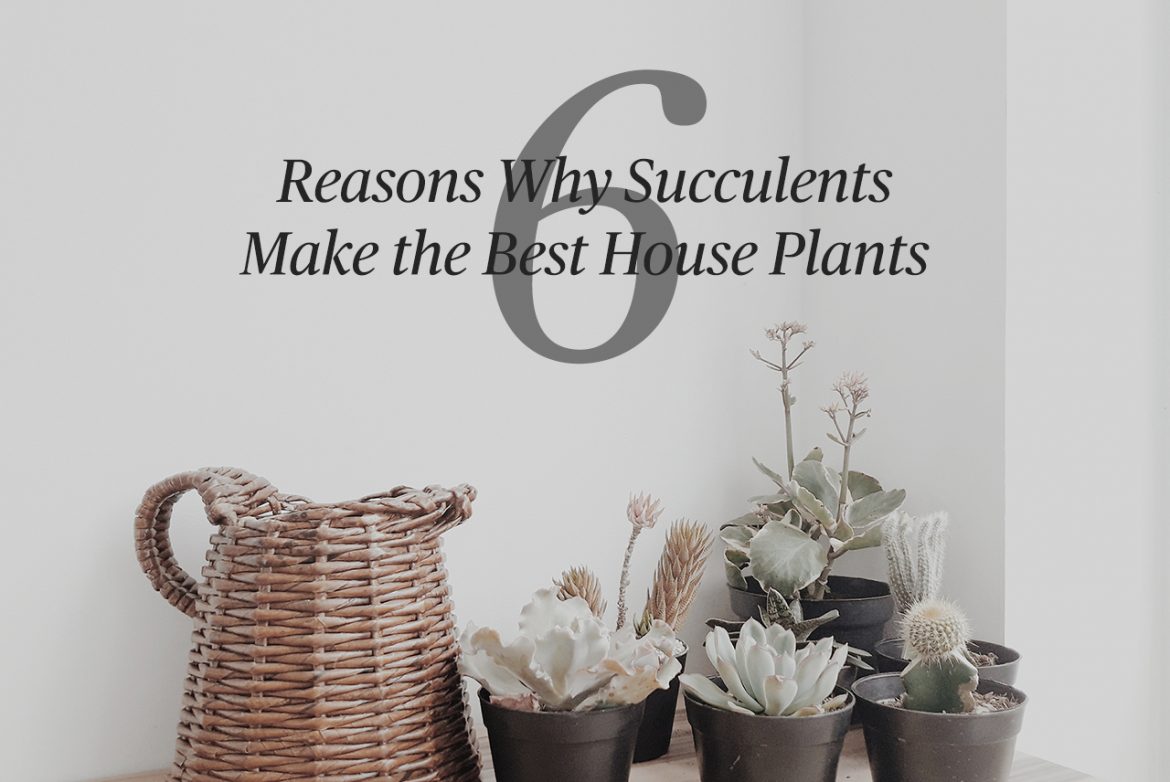Six Reasons Why Succulents Make the Best House Plants
Houseplants are a favorite addition to many homes because they can brighten the room and a person’s mood, and they are even known to lower the levels of indoor contaminants. But some houseplants are more advantageous than others. Succulents make some of the best houseplants for six essential reasons:
1. They can tolerate dry, indoor conditions.
Unlike many plants, succulents can tolerate conditions of low, relative humidity. They do not suffer the unpleasant side effects of dry air. This characteristic is especially important indoors, where air tends to be dryer, and in the winter months.
2. They don’t need much watering.
Succulent plants have a unique adaptation that enables them to tolerate limited watering better than most houseplants. Their thick, fleshy leaves and stems, as well as their enlarged roots, allow them to retain water so that they do not need watering as frequently as other plants. They even get their name from this feature, as “succulent” comes from the Latin succulentus, which, according to the Online Etymology Dictionary means “having juice.”
You expect cacti to require little watering, but this is true of most other succulents as well. Often, you can even allow the soil to dry out between waterings. In fact, you can kill a succulent houseplant with too much water. You’ll know you have to water, however, when:
- You can shove your fingers into the soil two-knuckles deep, and they come out dry.
- The usually shiny leaves begin to wither.
- The leaves pucker or shrink.
3. They don’t require much fertilizing.
Succulents tend to grow in the spring and summer and go dormant in the winter, with a sort of “rest period” in the fall. This cycle means they don’t need a lot of expensive fertilizers to remain vibrant. You can refrain from feeding your plant entirely during the winter, or at least go light on the plant food.
You only need to fertilize succulent plants a total of three or four times during the warmer months of the year. Because they don’t require a lot of feeding, you can use about half of the fertilizer you apply to a typical houseplant, which means you’ll save money.
4. They’re like living sculptures.
People often think to decorate their houses with paintings, trinkets, candles, and small statues, but what about a living sculpture? The Italian poet Dante Alighieri once wrote that “Nature is the art of God.” If this is true, then succulents are Mother Nature’s sculptures. Their stark, distinct, and robust leaves and stems, along with their arresting foliage or trailing greenery, gives them the appearance of living works of art.
5. You can use them to make indoor gardens.
You don’t have to plant your succulents alone. Succulent plants “play nice together.” You can put several succulents in the same container to create a “dish garden” of sorts. There is a catch, however. You’ll want to make sure the plants in your indoor garden share a few features:
- Similar rates of growth
- Comparable watering needs
- Like sunlight needs (i.e., don’t mix a succulent that prefers the partial shade with one that requires full sunlight)
6. They’ll fit well in your home.
You can find a succulent houseplant that is a match for any room in your house, and that will fit well in the available space. Succulent houseplants tend to grow to the size of their containers, so even if they are large in the wild, you can contain their growth within your home. Different types of succulents can fill different sorts of spaces and locations. You can find a plant for:
- Hanging from a ceiling hook
- Growing in a dim, tall corner
- Resting on a window sill in full light
- Adorning an empty spot in a bookcase
- Decorating the foyer
